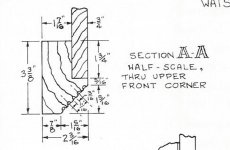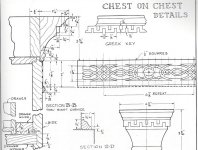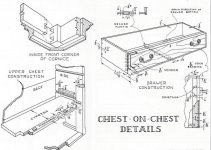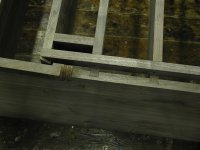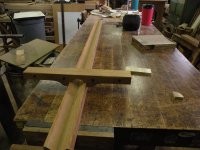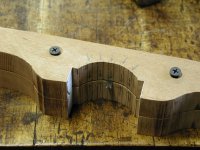Hi,
I am planning on building the Charleston double chest on the front of the Samuel Humphrey book and had a couple of questions. I think there are a few folks on the forum that have built this chest. I saw some discussions on applying the fretwork. My question is regarding the corners of the top chest where the fluting is done. I know that larger pieces of mahogany are added to the sides and then chamferred. I am just not sure how big the pieces are and how they are attached to the case sides and top. Are they simply edge glued to the sides and dovetailed into the top? If anyone has any photos of the construction and the process of chamfering the corners I would appreciate it? Or an explanation of how it is done? I did see a photo on another forum of Ben Hobbs or Calivin (can't remember) chamfering the corner with a draw knife.
Any help you can provide is greatly appreciated.
Thanks,
Brian
I am planning on building the Charleston double chest on the front of the Samuel Humphrey book and had a couple of questions. I think there are a few folks on the forum that have built this chest. I saw some discussions on applying the fretwork. My question is regarding the corners of the top chest where the fluting is done. I know that larger pieces of mahogany are added to the sides and then chamferred. I am just not sure how big the pieces are and how they are attached to the case sides and top. Are they simply edge glued to the sides and dovetailed into the top? If anyone has any photos of the construction and the process of chamfering the corners I would appreciate it? Or an explanation of how it is done? I did see a photo on another forum of Ben Hobbs or Calivin (can't remember) chamfering the corner with a draw knife.
Any help you can provide is greatly appreciated.
Thanks,
Brian

